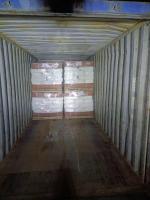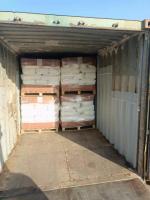Our Products
Polyacrylamide / Cationic polyacrylamide liquid(ZETAG 7878 ZETAG 7879) can be replaced by Chinafloc EM

The main application of cationic polyacrylamide liquid is primarily in water treatment processes, especially for sludge dewatering, wastewater clarification, and solid–liquid separation in municipal, industrial, and environmental systems. Cationic polyacrylamide liquid is a water‐soluble polymer with a high cationic charge density and strong flocculation capability. Its liquid form provides ease of dosing, rapid dissolution, and consistent performance, making it especially suitable for facilities where preparation time and operational convenience are important. Below is a detailed overview of its main applications, focusing on how and why cationic polyacrylamide liquid is used in various sectors.
1. Municipal Wastewater Treatment
One of the most important applications of cationic polyacrylamide liquid is in municipal wastewater treatment plants. In such facilities, large volumes of sewage sludge are generated during the primary, secondary, and tertiary treatment stages. The sludge contains high moisture content and dispersed solids that are difficult to separate from water without chemical assistance.
-
Sludge Dewatering:
Cationic polyacrylamide liquid is used in belt filter presses, centrifuges, and chamber filter presses to improve dewatering efficiency. The cationic polymer neutralizes the negative surface charges of sludge particles, causing them to aggregate into large, dense flocs that release water more easily. This results in lower sludge cake moisture content, reduced sludge disposal volume, and significant savings in transport and landfill costs. -
Sludge Thickening:
Before dewatering, sludge often needs to be thickened to reduce volume. Cationic polyacrylamide liquid promotes the aggregation of fine solids, allowing gravity thickeners or flotation thickeners to operate more effectively. -
Ease of Use:
In municipal operations, liquid form is preferred because it eliminates the need for polymer dissolution equipment, reduces preparation time, and ensures consistent concentration.
2. Industrial Wastewater Treatment
Cationic polyacrylamide liquid is widely used in various industrial wastewater treatment systems, including pulp and paper, chemical manufacturing, textile dyeing, food processing, and oil refining.
-
Pulp and Paper Industry:
In paper mills, cationic polyacrylamide liquid is used for sludge dewatering, white water clarification, and fiber recovery. Its cationic nature helps in retaining fines and fillers while reducing turbidity in circulating water systems. -
Textile Industry:
Textile effluents often contain colorants, sizing agents, and suspended fibers. Cationic polyacrylamide liquid binds with negatively charged particles, aiding in color removal and sedimentation. -
Food Processing Industry:
Wastewater from meat processing, dairy plants, and breweries contains high organic loads and fats. Cationic polyacrylamide liquid promotes efficient separation of suspended solids and grease, improving downstream biological treatment performance. -
Chemical and Petrochemical Plants:
Used for sludge treatment and separation of emulsified oils, the cationic polymer plays a role in dissolved air flotation (DAF) units and clarifiers.
3. Sludge Dewatering in Environmental Remediation
In environmental clean‐up operations, especially when handling contaminated sediments, drilling muds, or dredged materials, cationic polyacrylamide liquid is used to consolidate solids for disposal or further processing. Its strong flocculation effect ensures minimal water content and improved handling of the solid phase.
4. Mining and Mineral Processing
While anionic polyacrylamides are more common in mineral processing, cationic polyacrylamide liquid finds specific uses where the slurry or tailings have a high content of negatively charged clays or organic matter. It is applied in sedimentation tanks, tailings thickening, and water recycling systems to improve clarity and reduce the load on downstream filtration units.
5. Oil and Gas Industry
In oilfield wastewater treatment, cationic polyacrylamide liquid is used for separating oil–water emulsions and removing fine solids. In produced water treatment, it helps enhance the performance of flotation cells and skimmers.
Additionally, in drilling operations, it can be applied for treating waste drilling fluids before disposal, improving water recovery and reducing the volume of waste slurry.
6. Advantages of Using Liquid Form
While cationic polyacrylamide is available in powder, emulsion, and liquid forms, the liquid formulation offers distinct operational benefits:
-
Rapid and Complete Dissolution: No need for long hydration times, as required by powder forms.
-
Accurate Dosing: Liquid can be metered directly into the system, providing precise control.
-
Reduced Dust Hazard: Eliminates airborne polymer dust common with powders.
-
Consistency: Maintains uniform concentration without clumping or incomplete dissolution.
7. Mechanism of Action
The effectiveness of cationic polyacrylamide liquid lies in its electrostatic charge neutralization and bridging mechanism:
-
Charge Neutralization – The positively charged polymer chains attach to the negatively charged surfaces of suspended solids, neutralizing repulsive forces.
-
Polymer Bridging – Long polymer chains link multiple particles together, forming dense, fast‐settling flocs.
This combination allows for faster settling, improved water clarity, and more efficient solid–liquid separation.
8. Key Performance Parameters in Application
When applying cationic polyacrylamide liquid, the following parameters are critical for achieving the best performance:
-
Charge Density – Must be matched to the sludge characteristics to maximize flocculation efficiency.
-
Molecular Weight – Affects the strength and density of the flocs.
-
Dosage Optimization – Overdosing can cause restabilization of particles, while underdosing reduces efficiency.
-
Mixing Conditions – Gentle mixing is needed to distribute the polymer without breaking the formed flocs.
9. Environmental and Regulatory Considerations
Cationic polyacrylamide liquid is non‐toxic in its polymerized form, but residual monomers (acrylamide) must be minimized to meet environmental regulations. Proper handling, dosing, and disposal procedures are essential to ensure compliance with local wastewater discharge standards.
Summary
The main application of cationic polyacrylamide liquid is in sludge dewatering and solid–liquid separation within municipal and industrial wastewater treatment systems. Its ability to rapidly form dense, easily dewatered flocs makes it indispensable for reducing sludge volume, improving water clarity, and enhancing the efficiency of mechanical dewatering equipment. The liquid form offers operational convenience, quick dissolution, accurate dosing, and dust‐free handling, making it especially valuable in facilities where process reliability and ease of use are priorities. Beyond municipal plants, it is also used in food processing, textile, pulp and paper, oil and gas, and certain mining applications, wherever negatively charged solids must be effectively separated from water.





